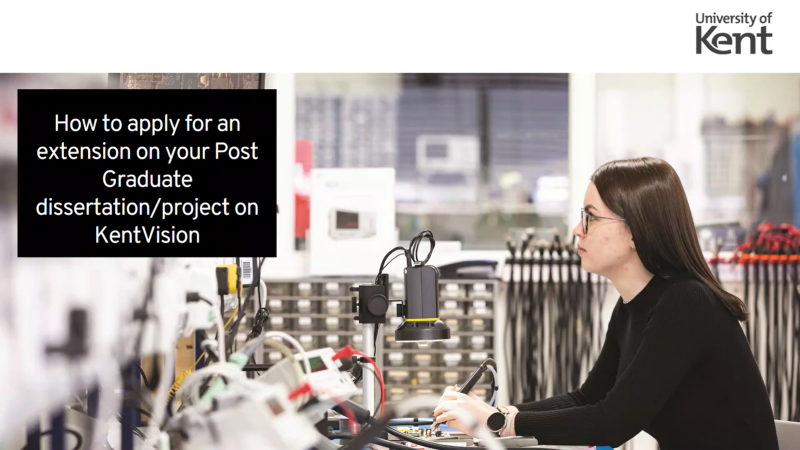What are extenuating circumstances?
Extenuating circumstances, also known as mitigating circumstances or concessions, are unforeseen or unpreventable circumstances which negatively affect your performance in assessed work. You can request to have these circumstances taken into account.
When should I submit a request?
Requests should be made no more than 14 calendar days in advance of a deadline that you think may be impacted by your circumstances, and within 7 calendar days after a missed deadline.
You are advised to submit your request as soon as possible and, for End of Year requests, in time for accepted requests to be considered by the Mitigation Committee prior to the Board of Examiners’ meeting. Forms submitted beyond such meeting will have to be processed as per the Early Informal Resolution procedure.
How do I submit a request?
If you are a Kent and Medway Medical School student, please use the KMMS form.
All other schools use KentVision. Below is text and video guidance for submitting either an In-Course or End of Year extenuating circumstances request.
1. In KentVision, choose the Student Support tile and then choose the Extenuating Circumstances tile.
2. After reading the on screen information, click Apply for mitigation.
3. Choose the appropriate option for your request: either in-course or End of Year mitigation.
4. If you are submitting an End of Year request, you will need to either choose a date range or tick the ongoing box. You will see a list of your modules. Use the plus icons on the far right of the screen to view the assessment options within the chosen module. Choose the appropriate assessment line(s) and click Continue.
5. Complete the application summary information and give consent for your information to be shared with appropriate university staff. Click Save.
6. You will now see the final review page for your request. Here you can restart, update, or save and submit your form later. If your request is complete, tick the consent box and Submit. Your application will not be submitted until you click the submit button.
7. You will see a confirmation message that your application form has been submitted and, after clicking OK, see a summary page. You will also receive an email notification.
8. You will receive an email of the outcome once your application has been reviewed by staff.
Video guidance on how to submit an In-Course extenuating circumstances request.
Video guidance on how to submit an End of Year extenuating circumstances request, including what happens if you have chosen to provide proof at a later stage.
How to apply for an extension on your Postgraduate dissertation/project
If you need to apply for an extension on the submission of your Postgraduate dissertation or project due to extenuating circumstances, this can be done via KentVision. Please watch the below video for process guidance.
FAQs
FAQs can be found in KentVision. From the dashboard, choose the Student Support tile and then choose the Extenuating Circumstances tile. Click Apply for extenuating circumstances and you will see the FAQs in gold text. You can exit this page by clicking the Quit button at the bottom of the page.


